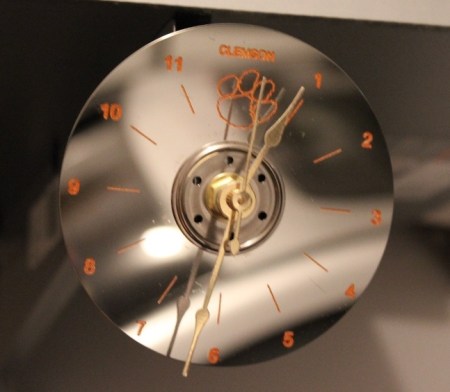![]()
This week’s post on core rope ROM was pretty popular. [Joey] wrote in with a book recommendation for those that found the project interesting. Digital Apollo discusses the technology which NASA built into the guidance computer. That was also the subject of a recent Retrotechtacular.
A few members of the Vancouver Hack Space came up with their own take on the Word Clock. It uses an old monitor, a laser-cut bezel, and Javascript to light up the correct characters.
When we last looked in on [Vincent’s] plywood stool project he had branched out into plywood folding chairs as well. Here’s two updates on his progress.
This one’s just silly. To keep up with his wife on exercise goals, this guy cheated using a reciprocating saw to spoof his exercise. Tape the FitBit to the saw blade, clamp the saw to the workbench, and then let her rip! [via Reddit]
[Harrison] wrote into share the Arduino button library he developed. It is designed to allow detection of multiple types of button events without blocking other operations. He came up with the project to use with his motorcycle hacking.
It looks like [Bertho] has kitted up his Executive Decision Maker. We first saw this as a perfboard project a couple of years ago.
And finally, [Bob Alexander] makes your hard drive clock look puny. His uses the platter from a 40-year-old mainframe hard drive.











